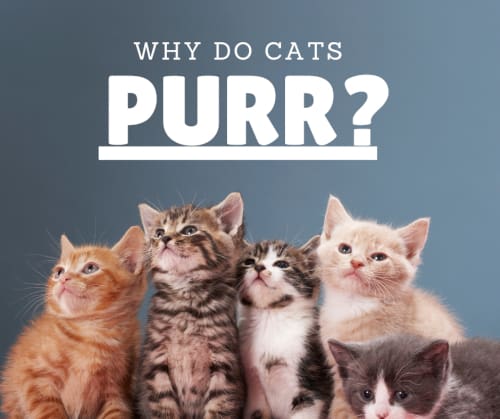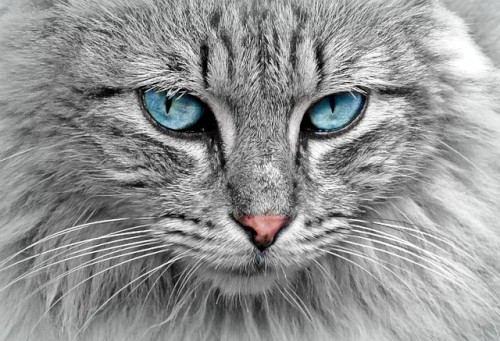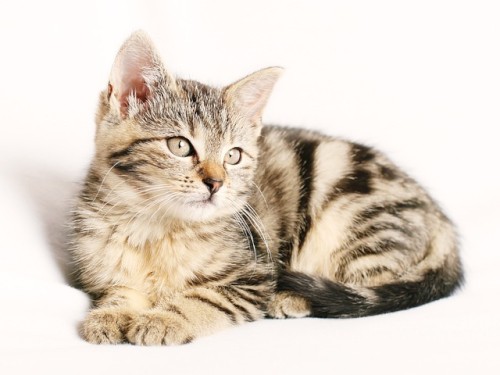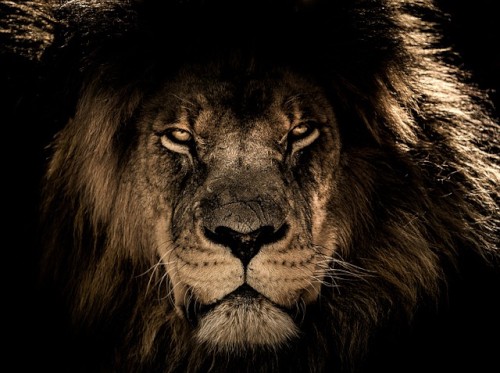Cats, with their mystifying traits and actions, have long captivated human interest. One of the most captivating aspects of their behavior is their purring. This action is typically linked to feelings of happiness. The soothing sound of a cat purring can bring both comfort and intrigue. However, there’s more to this behavior than meets the ear. It’s not just an expression of joy; there’s a deeper auditory mystery to explore.
Exploring the Science of Purring in Felines
The Mechanism of Cat Purring
Cats possess a distinct vocal characteristic: purring. Scientific studies have revealed that this sound is produced by a combination of movements in their laryngeal and diaphragmatic muscles. Remarkably, this occurs during both breathing in and out, producing a continuous, rhythmic sound that comforts both the cat and those around it.
Purring Frequency and Its Healing Impact
It has been found that the purring of a cat varies between 25 and 150 Hertz in frequency. These frequencies are noted for their healing abilities, possibly aiding in enhancing bone density and repairing muscles. This revelation has opened up new perspectives on the potential health benefits of purring for cats, extending beyond its role in communication.
Understanding the Various Reasons Cats Purr
Bonding Between Kittens and Mothers
Kittens start purring at an early age as a means of interacting with their mothers. This is crucial for their survival, aiding in establishing a bond with their mother and indicating their whereabouts.
Signifying Satisfaction
Purring is often a signal of a cat’s happiness. When a cat is serene and enjoying a tranquil moment, it usually purrs to show its pleasure.
Desire for Attention or Food
Cats may purr to express a need for attention or food from their human companions. This kind of purring can be distinct, often accompanied by meows or calls to elicit a response from humans.
Response to Stress or Discomfort
Interestingly, cats also purr in situations where they feel stressed or uneasy. This is believed to be a method of self-comfort, similar to a child’s habit of thumb-sucking.
Deciphering Your Cat’s Purring
Contextual Interpretation of Purring
To comprehend why your cat is purring, it’s essential to consider their body language and the situation. A purr in a relaxed setting might indicate happiness, whereas a purr at the vet could be a sign of anxiety or fear.
Human Reactions to Cat Purring
Humans generally have a positive reaction to a cat’s purring, which can evoke a sense of nurturing. This reciprocal benefit underscores the profound connection between cats and their human caretakers.
Purring Across Different Types of Cats
Purring, commonly associated with household cats, is also a behavior seen in other members of the cat family, including certain larger wild cats. This section explores the variations in purring among different cat species and its implications in an evolutionary framework.
Comparison Between Household and Larger Wild Cats
While household cats (Felis catus) are renowned for their characteristic purring, they are not the only cat species that exhibit this trait. Among the larger wild cats, species such as pumas and cheetahs also exhibit purring behaviors. The key difference lies in their voice box anatomy. Larger wild cats like lions and tigers have a larynx that enables roaring but not the continuous purring seen in household cats. In contrast, pumas and cheetahs have a laryngeal structure that allows them to purr but not roar.
The Evolutionary Role of Purring
Purring is thought to hold evolutionary importance. In the wild, purring serves various functions. For young kittens, it’s a mode of communication with their mothers, particularly important when they are newborn and lack sight and hearing. For adult larger wild cats, purring might be involved in social bonding or healing, as observed in household cats. The evolutionary benefits of purring might relate to these facets of communication, social interaction, and potential health advantages.
Purring in Wild Cat Species
In wild cat species, purring assumes a different role. For example, cheetahs are observed to purr during peaceful social activities like grooming or resting together. This suggests that purring in these cats is used for social bonding and expressing satisfaction, akin to household cats. However, the circumstances under which wild cats purr can greatly differ due to their unique environments and social dynamics.
Continued Research and Discoveries
Research into cat behaviors is ongoing and continues to reveal more about the complexity of purring. Studies have noted purring in various contexts, indicating that wild cats, much like household cats, may use purring as a communicative tool in diverse emotional states. Understanding these behaviors in wild cats provides further insight into the evolutionary origins and purposes of purring.
Unraveling Misunderstandings About Cat Purring
Cat purring, a common yet intriguing behavior, is often misunderstood due to misconceptions arising from the complexity of feline communication. These myths can obscure the true nature of why cats purr. Let’s clarify some of these misunderstandings to better appreciate this unique aspect of cat behavior.
Misconception 1: Cats Purr Only When Content
A widespread belief is that cats purr exclusively when they’re happy. While it’s true that contentment often leads to purring, this behavior is not solely an expression of joy. Cats also purr when experiencing pain, fear, or anxiety. In such scenarios, purring acts as a comfort mechanism, similar to how humans might use coping strategies during stress.
Misconception 2: A Purring Cat is Necessarily Healthy
The notion that purring equates to good health is another misconception. Cats may purr when they are unwell or injured. It’s theorized that purring’s low-frequency vibrations help with pain alleviation and recovery, which could be why cats in distress purr.
Misconception 3: Uniformity in Purring Across Cats
Many assume that all cats purr in the same way. In contrast, the tone and frequency of a cat’s purr can significantly differ based on the individual cat, its mood, and its health. While some cats purr loudly and deeply, others might exhibit a gentle, barely noticeable purr.
Misconception 4: Purring is Exclusive to House Cats
There’s a misconception that only domestic cats purr. In reality, some larger wild cats, like cheetahs and pumas, also display purring behaviors. This myth fails to recognize the variety of purring behaviors among different cat species.
Misconception 5: Cats Purr Entirely by Choice
It’s commonly thought that cats purr entirely at their discretion. While cats do have some control over purring, it’s also an instinctual response triggered by various emotions. In certain situations, like when they are distressed or uncomfortable, cats might purr involuntarily.
Misconception 6: Purring Cats are Seeking Physical Affection
Interpreting a cat’s purr as a request for petting is a common misunderstanding. Though sometimes accurate, a cat’s purr isn’t always an invitation for human interaction. Cats may purr for reasons independent of their interactions with people, such as self-comfort or pain relief. Understanding a cat’s purr requires observing its overall behavior and the context in which it purrs.







